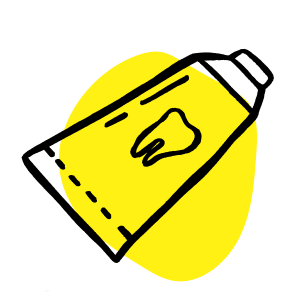What are
CEREC crowns?
CEREC crowns?
Learn how CEREC crowns work to restore oral function
Indirect restorations are an integral part of dentistry. These include crowns, bridges, inlays, veneers, and much more. For the longest time, the process of getting an indirect restoration was so tedious that some people would just be turned off from the idea altogether.
However, in recent years, the situation has completely changed. We were recently introduced to one of the greatest technologies in the dental field, one that has truly upped the game for dentists of every specialty worldwide, and torpedoed dentistry into the digital world, and that is CAD\CAM technology.
Compare dentists in your area and manage
your appointments all in one place.
Take control of your dental health.
Find a CEREC dental expert on AirSmile
Crowns and other indirect restorations are generally expensive. Depending on the material, a single crown could cost between $1000 to $2000. For CEREC crowns, you would expect the prices to be much higher than these, however the prices tend to be very similar.

Natural appearance

Biocompatible

Easy to maintain

Restores function

Strong solution

Convenient






Understanding your condition is the
key to making the right choices for you
CAD/CAM stands for computer aided design/ computer aided manufacturing. As you can probably surmise from the title, it is a method of bringing computers into the process of designing and manufacturing various dental restorations. This technology has elevated the accuracy of such restorations and increased their longevity, not to mention they also cut the waiting time to almost nothing, but more on that in a little bit.
The traditional method of crowns – or any other indirect restoration – manufacturing is still present and still used by many dentists around the world. After the tooth is prepared to receive the crown, an impression is taken using a rubber-based impression material – yes the gooey material that sets against your teeth that is then sent to the lab. The lab pours that impression in stone, and uses that stone model to form a crown or bridge. Specialized wax is used to form the shape of the crown, which is then transformed into metal, porcelain or zirconium (according to the type of crown) through a very detailed and lengthy process. The whole procedure mainly depended on the skill of the laboratory technician. The final crown is then returned to the dentist, who tries it inside the patients mouth, and if all is well, finally cements it in place over the tooth.
Cerec by Dentsply Sirona is the first ever CAD/CAM technology to be incorporated in the dental field. Cerec crowns are CAD/CAM crowns made by these specialized machines that cut the manufacturing time of crowns and other indirect restorations to about 1/5 the time it took for traditional crowns to be made. Traditional crowns needed around 5 to 7 days to be manufactured – that’s the time it took for the impressions to reach the lab, and for the lab to pour them out and design the crowns manually and so on- but with Cerec crowns, the entire procedure could be done inside the clinic, while you wait on the dental chair for about an hour!
In the beginning, the machines were huge, taking up a large room on its own, and could only make crowns made of metal. Nowadays however, the situation is much different. Newer Cerec machines are about the size of a large suitcase, which fits well inside any dental practice.
.
Cerec is not a single machine, but an entire incredibly intelligent system. Dentsply Sirona manufactured a brilliant system to transform the entire process of crown manufacturing into a smooth ride for both dentists and patients.
First of all, no more gooey impression materials. Instead, the impression is taken using a very specific and highly accurate intraoral camera, that could capture not only the prepared tooth, but the surrounding areas as well including the soft tissues, and also register the way the patient’s teeth bite together, all of which are important for correct design. This whole scan takes less than a minute, without having to worry about gagging or the terrible taste of the impression materials.
After that, the scan is transferred to the design unit, which is a computer uniquely programmed to design various dental restorations. What’s great about that is that you – the patient – can have a hand in designing your own restoration. You can make the adjustments you want, making the crown taller, shorter, more rounded, or whatever you think is best for your looks. It also takes away the human part and any errors that come with it.
Finally, after the design is finished comes the manufacturing part. A milling machine carves out the design that was just made from blocks of zirconium or porcelain with pinpoint precision, and with accuracy up to 0.1 mm. The crown is now ready to be tried in your mouth, all while you wait about 45 minutes for that whole process.
There is one final step before you can take your crown home, and that is the hardening process of the porcelain using a specialized oven. This is done after the try-in ensures that the shape and fit of the crown is satisfactory.
The system carries a lot of advantages, including:
That goes without saying. What was before a 7 day process of going back and forth to the dentist’s office at least twice is now an hour’s wait and same-day delivery. This was the main purpose behind the CAD\CAM technology in the first place, but a number of other advantages were made clear in the process.
Let’s face it, even if the lab technician is incredibly skilled, there is still a chance of human error. We are talking about restorations that are less than a millimeter in thickness in some areas, which is almost impossible for the human eye – let alone the hands and fingers – to replicate accurately. Computers however don’t have that restriction. They can replicate even the tiniest details, and make sure the designed crown is an exact replica of the tooth. Not only that, but the camera that is used for impression making is highly accurate, and capable of recording every small detail of the prepared tooth and its surroundings. Finally, the milling machine is usually a 5-axis turbine that could very well cut the designed crown with pinpoint precision. All in all, the computer eliminated all the worries and all the hassle of man-made errors.
One of the main drawbacks of crowns and bridges is their longevity. They are expected to last between 8 and 10 years before needing repair or changing. Failures of crowns and bridges occur because they are not entirely accurate, with minute spaces between the tooth and the formed crown that can trap bacteria and debris, and over time, that space enlarges and ultimately the crown won’t fit anymore.
That almost never happens with Cerec crowns, since there is nothing that is man-made, and therefore there are no holes or spaces, and the restoration fits the underlying tooth perfectly. That doesn’t mean of course that it will last a lifetime since there are many other causes of failure, but it certainly means that they will last significantly longer than crowns made in the traditional manner.
Crowns and other indirect restorations are generally expensive. According to the material, a single crown could cost between $1100 up to $2000. For Cerec crowns, you would expect the prices to be much higher than these, but you would be mistaken as the prices are only a fraction higher than traditional crowns.
About 30% of that cost goes out to the lab technician that manufactures the crown –we’re talking about the traditional way – but with Cerec machines, that sum doesn’t have to be paid for anyone, and so the costs for the dentist are reduced. Of course the system itself is very pricey, and that money has to come from somewhere, but all in all, prices for Cerec crowns aren’t much higher than traditional crowns, may be about 10% higher, and considering how much comfort, convenience, accuracy and longevity you get, we believe the difference is definitely worth it.
Cerec crowns are definitely the future, and we’re not surprised if they completely take over the industry given how much they offer.